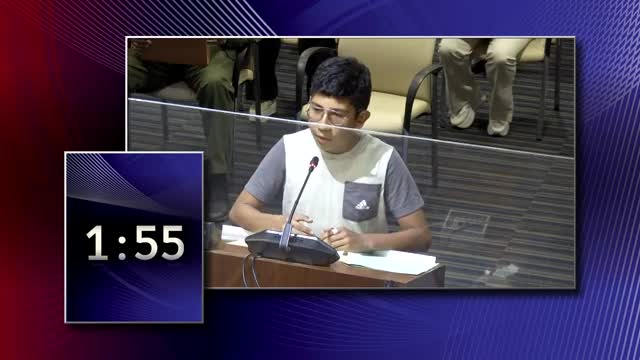Housing Crisis Sparks Controversy Over Emergency Shelter Plans
July 19, 2024 | Richmond, Contra Costa County, California

This article was created by AI summarizing key points discussed. AI makes mistakes, so for full details and context, please refer to the video of the full meeting. Please report any errors so we can fix them. Report an error »

During a recent government meeting, discussions centered on the pressing need for housing in the Bay Area, particularly in Richmond, where officials are grappling with the complexities of transitioning individuals from encampments to more stable living situations. A public hearing highlighted community concerns regarding the appropriateness of certain areas for new housing developments, especially those near schools and family-oriented facilities.
One community member expressed apprehension about placing new housing in areas densely populated with children, suggesting that alternative locations might be more suitable. The sentiment underscored the ongoing struggle between the urgent demand for housing and the need to maintain safe environments for families.
The meeting also addressed the operational framework for a new housing initiative, with officials clarifying the roles of various organizations involved in the transition process. The executive director of a local nonprofit explained that they would take on a more active role in managing the program, moving away from a landlord model to one that includes comprehensive support services such as job training and counseling. This shift aims to ensure that residents comply with program requirements, with the potential for exclusion from the program for non-compliance.
City officials discussed the previous use of a facility for emergency housing, which was deemed unsafe and led to the relocation of residents to hotels. Moving forward, they plan to utilize a navigation center model, which will provide transitional housing while working towards permanent placements for individuals.
The conversation also touched on the importance of funding in shaping the future of these housing initiatives. Officials noted that the success of the programs would depend heavily on securing adequate financial resources, which would dictate the types of services offered and the overall capacity to assist those in need.
As the meeting concluded, it was clear that while there is a commitment to addressing housing shortages, the path forward will require careful consideration of community needs, regulatory compliance, and sustainable funding strategies.
One community member expressed apprehension about placing new housing in areas densely populated with children, suggesting that alternative locations might be more suitable. The sentiment underscored the ongoing struggle between the urgent demand for housing and the need to maintain safe environments for families.
The meeting also addressed the operational framework for a new housing initiative, with officials clarifying the roles of various organizations involved in the transition process. The executive director of a local nonprofit explained that they would take on a more active role in managing the program, moving away from a landlord model to one that includes comprehensive support services such as job training and counseling. This shift aims to ensure that residents comply with program requirements, with the potential for exclusion from the program for non-compliance.
City officials discussed the previous use of a facility for emergency housing, which was deemed unsafe and led to the relocation of residents to hotels. Moving forward, they plan to utilize a navigation center model, which will provide transitional housing while working towards permanent placements for individuals.
The conversation also touched on the importance of funding in shaping the future of these housing initiatives. Officials noted that the success of the programs would depend heavily on securing adequate financial resources, which would dictate the types of services offered and the overall capacity to assist those in need.
As the meeting concluded, it was clear that while there is a commitment to addressing housing shortages, the path forward will require careful consideration of community needs, regulatory compliance, and sustainable funding strategies.
View full meeting
This article is based on a recent meeting—watch the full video and explore the complete transcript for deeper insights into the discussion.
View full meeting
